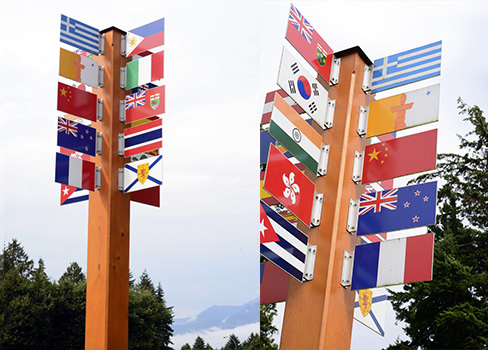First published on November 23, 2015 by Emily Larson
When looking for professional language services providers, your basic search likely began with phrases along the lines of “professional translation” or “translation company”, but once you actually get to the results, it’s likely that these same companies are talking not only about translation, but also localization. So, what is localization? Simply put, localization is a more nuanced form of translation that takes into consideration the specific regional and cultural characteristics of your target audience. Most translations will of course be a form of localization; for example, when working with idioms across multiple languages, but a translator can go beyond that and provide an even more detailed cultural interpretation. A classic example from the world of LAT is content we translate into French for the Canadian market. If you’re opening offices or selling products in Canada, you want internal communications and product labels that are translated not just into French, but the French Canadian dialect. At LAT, we strongly believe that taking the time to create nuanced localizations of your content is essential to engaging your audience and providing great customer service.
Now, I have a confession to make. I work for LAT and am passionate about our mandate, but I also struggled to truly understand how localization plays out in practice. Though I am with a translation and marketing company, I myself only speak English, so an example like the one above about French Canadian translation is purely theoretical. Because I don’t speak another language, I don’t have the personal experience of encountering a time in which a company went out of their way to translate their content specifically for my demographic. Or so I thought. This past year I hopped across the pond from Canada to the UK and had the very real first-hand experience of language localization…in English!

We don’t, or at least I don’t, often think about how English shifts across various regions. Sure I’m aware of things like Canadian versus American spelling, but ironically I never thought much about these nuances because I spend so much of my time thinking about the nuances of localization in other languages. Over the past few months, numerous walks through London and trips to the grocery store have elicited all kinds of confusion and laughter. There’s no orange juice with or without pulp, only with or without “juicy bits”. I spent more time than I’d care to admit staring at “washing up liquid” trying to determine whether it was for personal hygiene or dishes (turns out it’s the latter). I’ve also had passionate discussions over the merits of “arugula” or “rocket”, “coriander” or “cilantro”, and the oh-so-important distinction between “cookies” and “biscuits”. Though you’ve likely encountered these linguistic variations before, I can now say that it is one thing to understand that they exist, but quite another to actually experience it. Of all the moves in the world I could have made, Canada to the United Kingdom would hardly be the largest culture shock, yet those cultural differences have certainly impacted my stay thus far. Moving from one English-speaking Commonwealth country to another didn’t prevent me from making cultural gaffes or experiencing confusion. It also showed me the importance of language localization, particularly for businesses.

Source: oNigeria.com
Though we may not actively consider it, language really matters. Sure we know that we want to tweak our original marketing copy until it’s perfect, but do you take the same consideration when asking translation firms to adapt your material for different audiences? I can now distinctly identify content that is geared towards a British or North American demographic and, depending on the context in which I encounter that content, I’ll respond differently. Feeling a little homesick? Maybe a blog about a new Canadian business will really grab my attention that day. Seeking an authentic afternoon tea in London? I’ll go to the more “British” sounding website because it will feel more authoritative to me. My ability to identify these nuances and respond accordingly is by no means unique, and can be a powerful method for businesses to really reach out and engage with target communities.
Think about this: if you had a brochure from your New York storefront and were sending it over to your locations in London and Melbourne, you wouldn’t want the exact same English text for all three locations. Instead, you would expect localized tweaks that reflect each market. When moving to different languages, the same logic applies. You need to understand exactly who you are translating your content for, and then request a translation that is localized to that specific community. If your company can communicate a story that resonates with your audience, you’ll be well positioned for success. A key part of that communication is using language that will truly engage your audience, and if you go the extra mile by adopting a localization strategy that does just that, you will get their attention.




